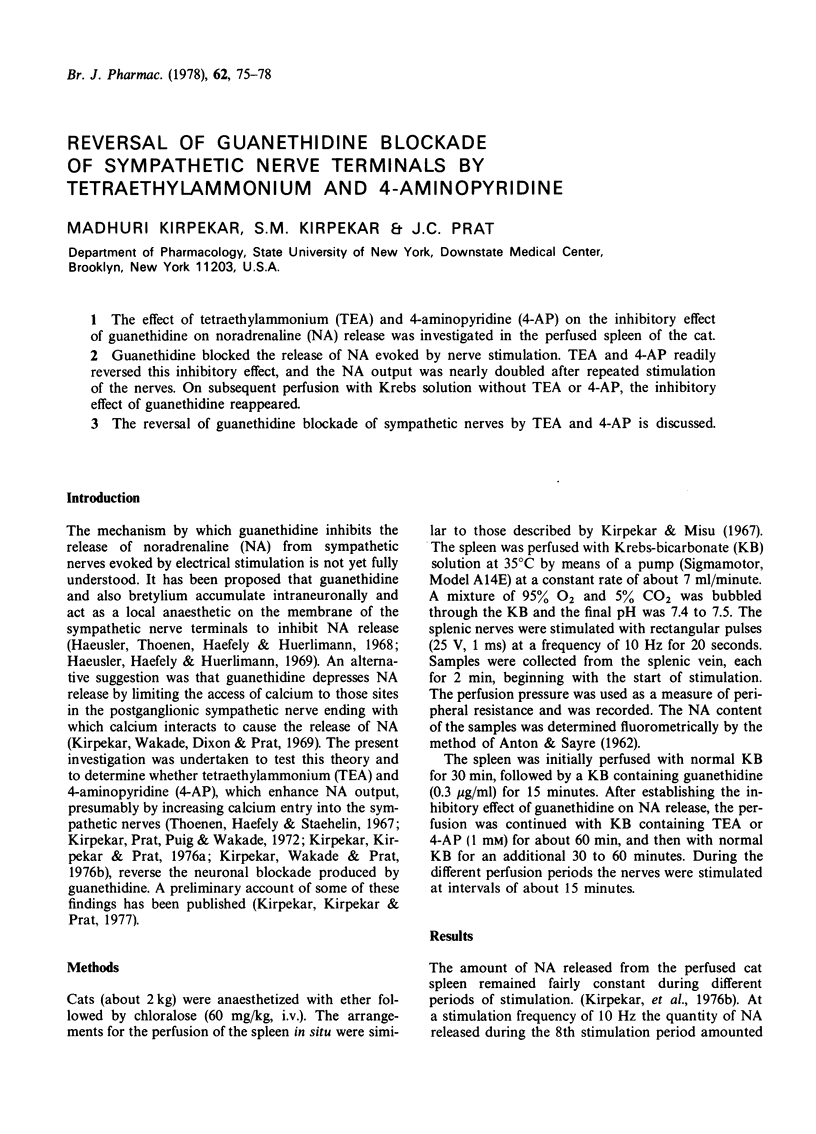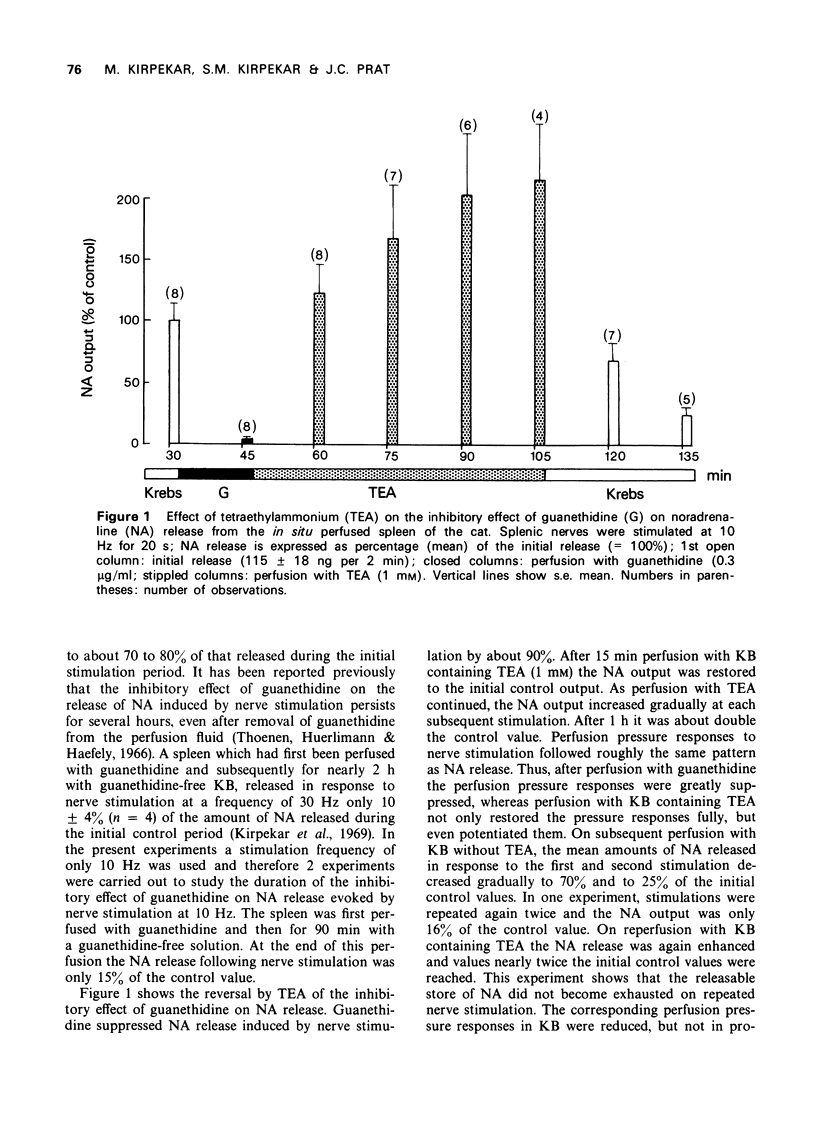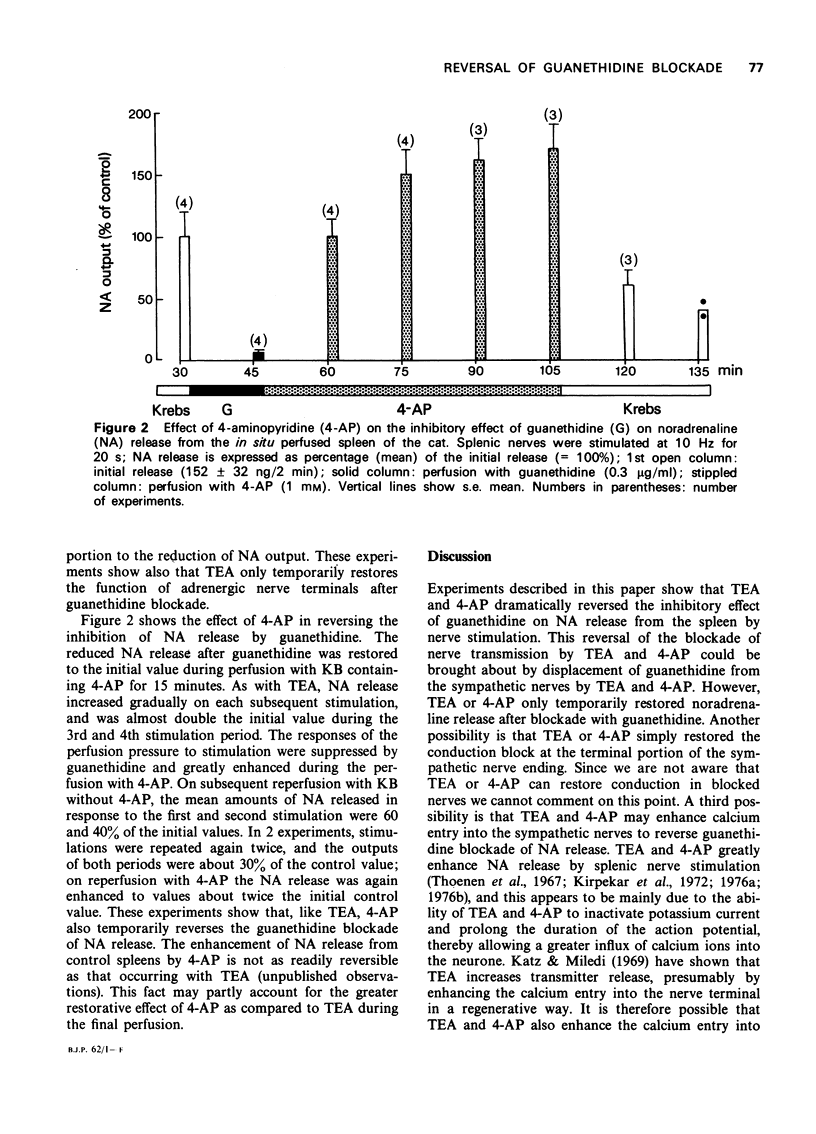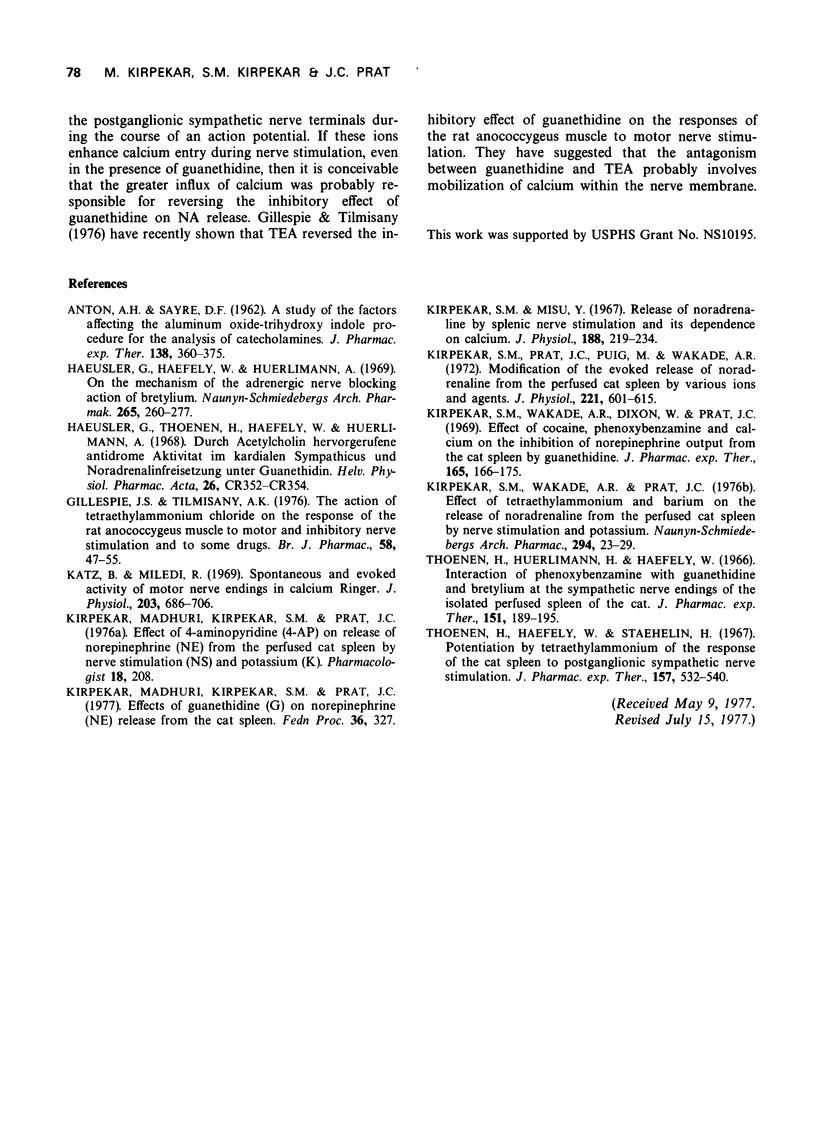Abstract
1 The effect of tetraethylammonium (TEA) and 4-aminopyridine (4-AP) on the inhibitory effect of guanethidine on noradrenaline (NA) release was investigated in the perfused spleen of the cat. 2 Guanethidine blocked the release of NA evoked by nerve stimulation. TEA and 4-AP readily reversed this inhibitory effect, and the NA output was nearly doubled after repeated stimulation of the nerves. On subsequent perfusion with Krebs solution without TEA or 4-AP, the inhibitory effect of guanethidine reappeared. 3 The reversal of guanethidine blockade of sympathetic nerves by TEA and 4-AP is discussed.
Full text
PDF



Selected References
These references are in PubMed. This may not be the complete list of references from this article.
- ANTON A. H., SAYRE D. F. A study of the factors affecting the aluminum oxide-trihydroxyindole procedure for the analysis of catecholamines. J Pharmacol Exp Ther. 1962 Dec;138:360–375. [PubMed] [Google Scholar]
- Gillespie J. S., Tilmisany A. K. The action of tetraethyl-ammonium chloride on the response of the rat anococcygeus muscle to motor and inhibitory nerve stimulation and to some drugs. Br J Pharmacol. 1976 Sep;58(1):47–55. doi: 10.1111/j.1476-5381.1976.tb07692.x. [DOI] [PMC free article] [PubMed] [Google Scholar]
- Haeusler G., Haefely W., Huerlimann A. On the mechanism of the adrenergic nerve blocking action of bretylium. Naunyn Schmiedebergs Arch Pharmakol. 1969;265(3):260–277. doi: 10.1007/BF01002340. [DOI] [PubMed] [Google Scholar]
- Häusler G., Thoenen H., Haefely W., Hürlimann A. Durch Acetylcholin hervorgerufene antidrome Aktivität im kardialen Sympathicus und Noradrenalinfreisetzung unter Guanethidin. Helv Physiol Pharmacol Acta. 1968;26(3):CR352–CR354. [PubMed] [Google Scholar]
- Katz B., Miledi R. Spontaneous and evoked activity of motor nerve endings in calcium Ringer. J Physiol. 1969 Aug;203(3):689–706. doi: 10.1113/jphysiol.1969.sp008887. [DOI] [PMC free article] [PubMed] [Google Scholar]
- Kirpekar S. M., Misu Y. Release of noradrenaline by splenic nerve stimulation and its dependence on calcium. J Physiol. 1967 Jan;188(2):219–234. doi: 10.1113/jphysiol.1967.sp008135. [DOI] [PMC free article] [PubMed] [Google Scholar]
- Kirpekar S. M., Prat J. C., Puig M., Wakade A. R. Modification of the evoked release of noradrenaline from the perfused cat spleen by various ions and agents. J Physiol. 1972 Mar;221(3):601–615. doi: 10.1113/jphysiol.1972.sp009770. [DOI] [PMC free article] [PubMed] [Google Scholar]
- Kirpekar S. M., Wakade A. R., Dixon W., Prat J. C. Effect of cocaine, phenoxybenzamine and calcium on the inhibition of norepinephrine output from the cat spleen by guanthidine. J Pharmacol Exp Ther. 1969 Feb;165(2):166–175. [PubMed] [Google Scholar]
- Kirpekar S. M., Wakade A. R., Prat J. C. Effect of tetraethylammonium and barium on the release of noradrenaline from the perfused cat spleen by nerve stimulation and potassium. Naunyn Schmiedebergs Arch Pharmacol. 1976 Jul;294(1):23–29. doi: 10.1007/BF00692781. [DOI] [PubMed] [Google Scholar]
- Thoenen H., Haefely W., Staehelin H. Potentiation by tetraethylammonium of the response of the cat spleen to postganglionic sympathetic nerve stimulation. J Pharmacol Exp Ther. 1967 Sep;157(3):532–540. [PubMed] [Google Scholar]
- Thoenen H., Huerlimann A., Haefely W. Interaction of phenoxybenzamine with guanethidine and bretylium at the sympathetic nerve endings of the isolated perfused spleen of the cat. J Pharmacol Exp Ther. 1966 Feb;151(2):189–195. [PubMed] [Google Scholar]


